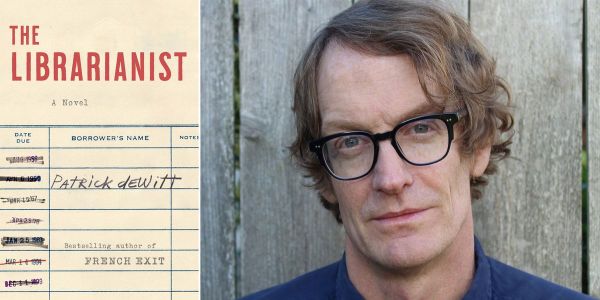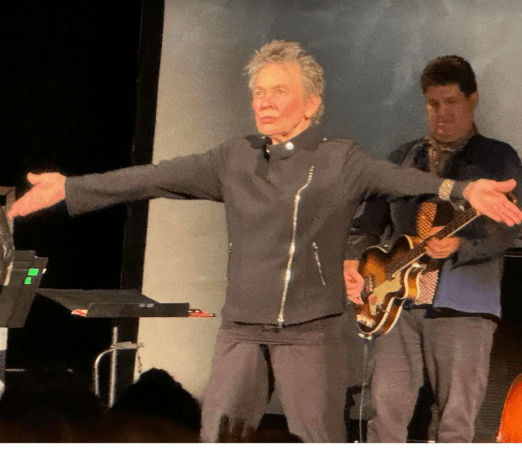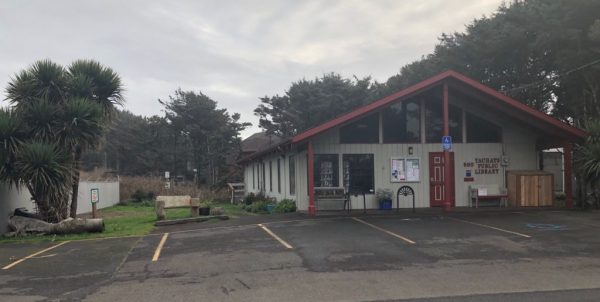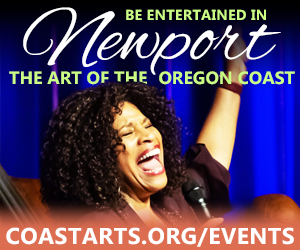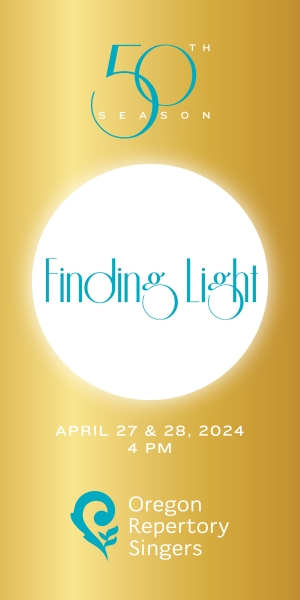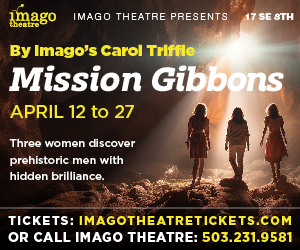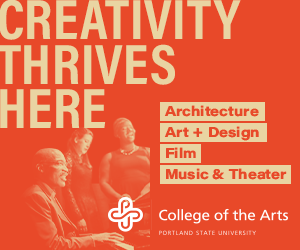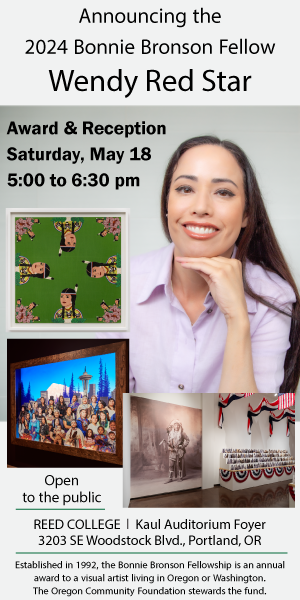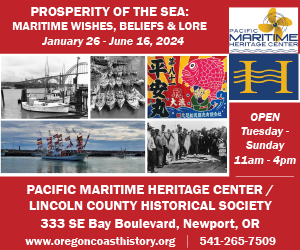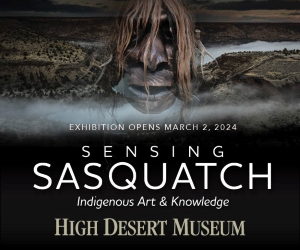

Left: Ned Blackhawk. Photo: Dan Renzetti. Right: Cover of his 2023 National Book Award-winning “The Rediscovery of America.”
Dr. Ned Blackhawk’s recent book The Rediscovery of America: Native Peoples and the Unmaking of U.S. History, received a 2023 National Book Award. On April 2, 2024, Blackhawk — an enrolled member of the Te-Moak Tribe of the Western Shoshone and a professor of history at Yale University — gave a presentation at Portland’s Arlene Schnitzer Concert Hall as part of the Oregon Historical Society’s Mark O. Hatfield Lecture Series. In his book Blackhawk weaves together 500 years of American and Native peoples’ history in a single volume, which is divided into two parts: Part I: “Indians and Empire” and Part II: “Struggles for Sovereignty.”
Blackhawk’s presentation in the Schnitzer focused primarily on Native American history from the 1870s to the 1940s. He began by describing the role that the Philadelphia Exposition (1876) and the Chicago Columbian Exposition (1893) played in exhibiting Native Americans, and in effect, placing them “outside of history.”
“These exhibitions saw the rise of a vision of the United States in the era after the Civil War and we saw Native Americans as … alternatives of American identity,” Blackhawk told his audience. He said that the United States at the time believed Native peoples were “outside of history” and lived lives that needed to be studied to confirm certain truths found in the mythological forms and ideologies of the period.
As a result, Native Americans were brought to the expositions for study by historians and other scholars. Ten million people visited Philadelphia and reveled in the transformation of the urban landscape while concurrently celebrating the 100th anniversary of United States independence. The Chicago Columbian Exposition celebrated the 400th anniversary of Christopher Columbus’s voyage to the New World.
Blackhawk believes these two expositions illustrated the rise of the United States following the end of the Civil War during what he termed “the reservation era” for Native peoples. Scholarly groups such as the Organization of American Historians began to study Native Americans and their cultures and write books about them.
One well-known book at the time was Hubert Bancroft’s five-volume study The Native Races, which described Native Americans in the following way: “It is only from the study of their barbarous natures that we are able to comprehend man as a progressive being.”
He further wrote that members of the Aleut tribe possessed “domestic manners of the lowest order. They have no idea of morality. They simply live in filth.” Essentially, North American scholars studied Native Americans in a way that represented them as different from civilized humans.
During his presentation, Blackhawk provided the names of early twentieth century Native American leaders who helped their people fight assimilation and removal from their land. Some of these activists included Laura Cornelius Kellog, Marie Louise Bottineau Baldwin, Getrude Bonnin Zitkala-Sa, Henry Roe Cloud and his spouse, Elizabeth Bender Cloud — activists who are largely unknown to most non-Native Americans.
Blackhawk provided several examples of the efforts of these leaders, including the founding of The Society of the American Indian in 1911 by Laura Cornelius Kellog in the Oneida Tribe area of Wisconsin. Kellog had a more radical vision for Native peoples that encompassed creating tribal communities that exercised economic power and expanded jurisdiction to govern themselves.
Another example was Henry Roe Cloud, a graduate of Yale University, who along with his wife, Elizabeth Bender Cloud, founded the American Indian School in 1915 that offered advanced academics and culturally rich pedagogy. Following the closure of the school during the Great Depression, Cloud became superintendent of the Haskell Indian School in Lawrence, Kansas — the largest Indian boarding school in the United States. During his tenure there, Cloud dismissed school employees who engaged in harsh discipline with students, and closed the existing jail. He also cultivated relationships with other educational institutions. Blackhawk noted that by 1935, twenty-eight Haskell Indian School graduates were accepted at the University of Kansas.
Blackhawk states that the 1920s and 1930s were designated by Native activists as the “Indian New Deal” because they began targeting Congress and elected officials to effect change for Native Americans. During the New Deal administration of President Franklin D. Roosevelt, John Collier was appointed as the Commissioner of the Bureau of Indian Affairs. In addition, Felix Cohen worked in the Department of Interior’s Solicitor’s Office. Both men worked together to help implement legislation and policies that allowed tribes to move toward self-governance. Cloud’s influence informed their work.
It was during this time that the Bureau of Indian Affairs successfully litigated to regain Native American land and mineral rights across the United States. In addition, Cloud was part of a committee that published the Meriam Report in 1928 — a report that heavily critiqued federal policy toward Native peoples. “An overwhelming majority of Indians are poor, even extremely poor,” the report declared, “and they are not adjusted to the economic and social system of the dominant white civilization.”
The Meriam Report was the first effort to ensure that the federal government would help Native Americans survive and flourish in the United States. According to Blackhawk, both Collier and Cohen collaborated with Cloud to reduce the ill effects of Native American assimilation. Several laws were passed, and court cases were decided during this era that helped Native peoples, including the Federal Indian Law (1941); a decision by the United States Supreme Court that ruled in favor of the Bureau of Indian Affairs — e.g., United States v. Santa Fe Pacific Railroad (1941); and the establishment of the Indian Claims Commission (1946).
Towards the end of his presentation, Blackhawk stated that the premise of his book is to showcase the struggles that Native peoples have endured over the past 500 years in North American due to colonization, capitalism, and racism. Moreover, he expressed hope that Americans will have a better understanding of what the defining features are for Native peoples regarding their ongoing struggle to maintain their identity, traditions, and sovereignty in the 21st century. He emphasized that the work must and will continue.
Blackhawk’s book fills an important gap in our knowledge of American history, and he has done a superb job of ensuring that the travails of Native peoples will not be forgotten.





